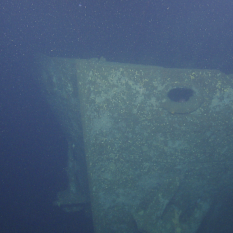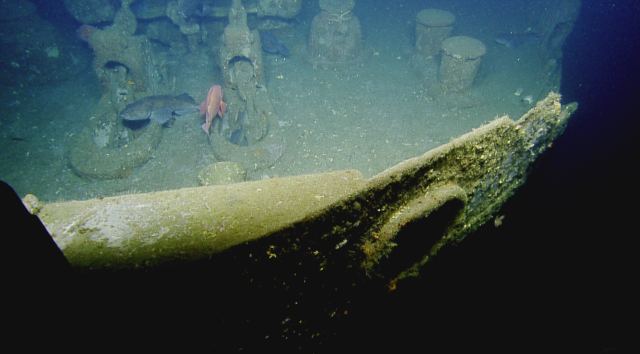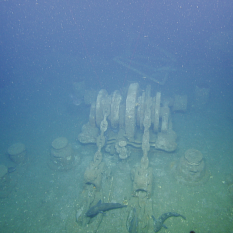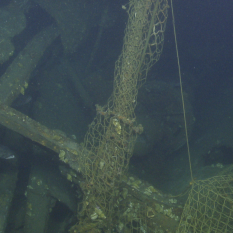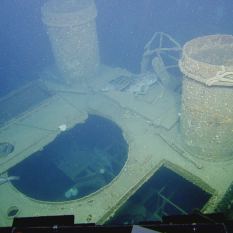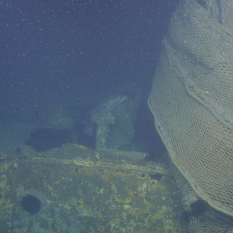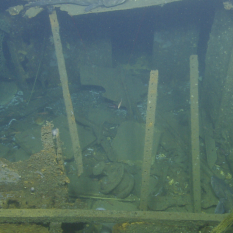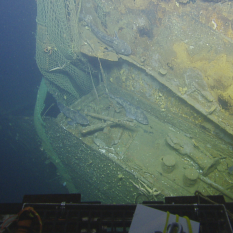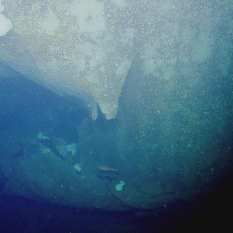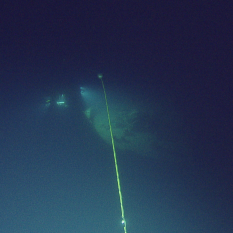Wreck of the SS Coast Trader
The cargo vessel, SS Coast Trader, was shipping newsprint and had full tanks of oil to supply the war efforts when it was sunk by the Japanese submarine, I-26, in June 1942. The E/V Nautilus' mission was to dive on a sonar target near the last known coordinates of the ship to determine whether the target was indeed the SS Coast Trader. The team used the ROVs Hercules and Argus to visually survey the wreck to determine the danger of oil leaking that was possibly still harboured. The team was able to confirm that it was indeed the SS Coast Trader and it appears the oil is secure in the hull of the vessel - though researchers will review the images thoroughly. Over the past 74 years, this wreck has become an artificial reef - damaged by entangled fishing nets - but inhabited by many fish, molluscs, crabs and more species.
At the time of sinking, all crew departed safely from the vessel.
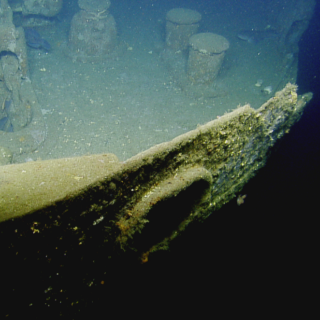
Seeps and Ecosystems of the Cascadia Margin
Methane is a powerful greenhouse gas and an important commercial resource that fuels many elements of our lives on land. Scientists are beginning to understand the complex and varied ways methane fuels life beneath the sea as well. Nautilus will study methane seep habitats along the length of the Cascadia Subduction Zone, from southern British Columbia to northern California.
